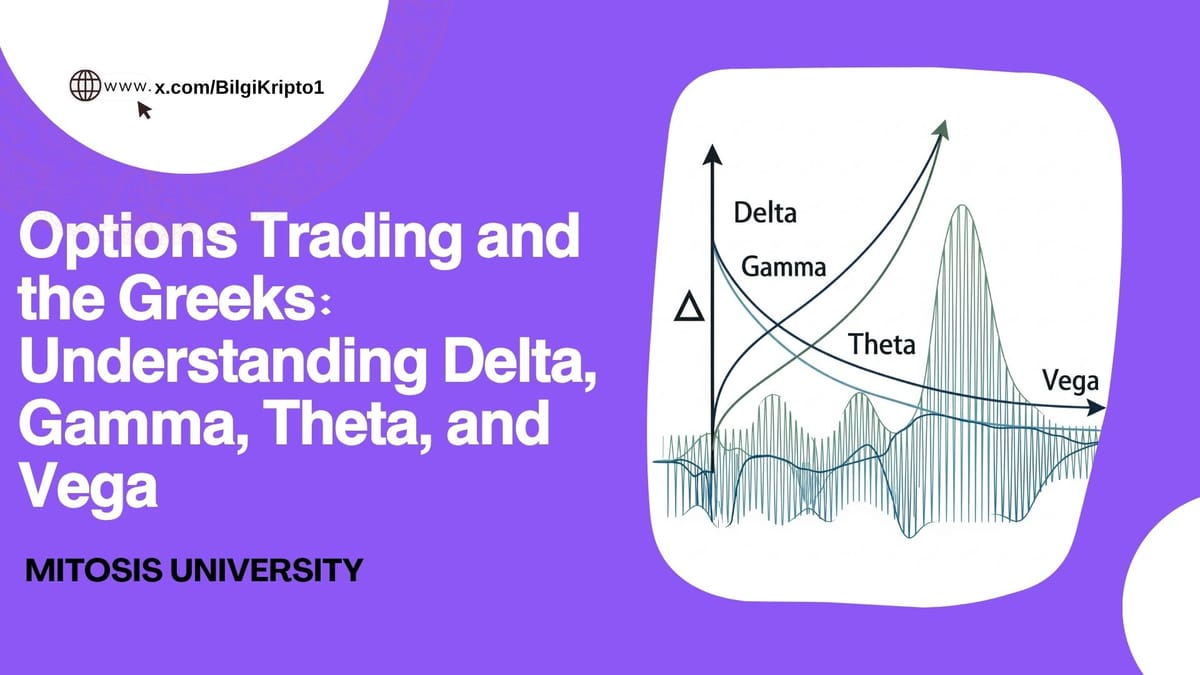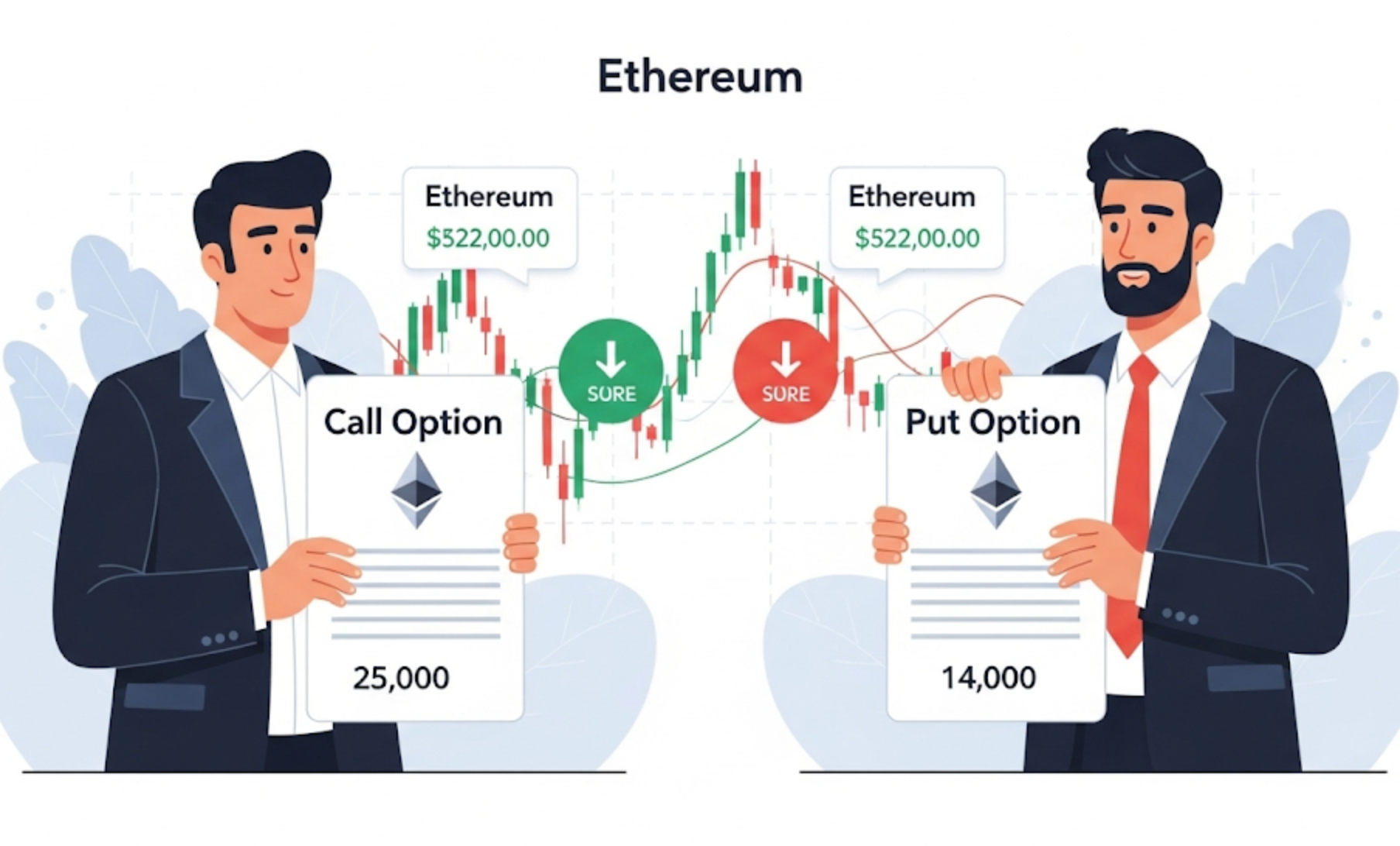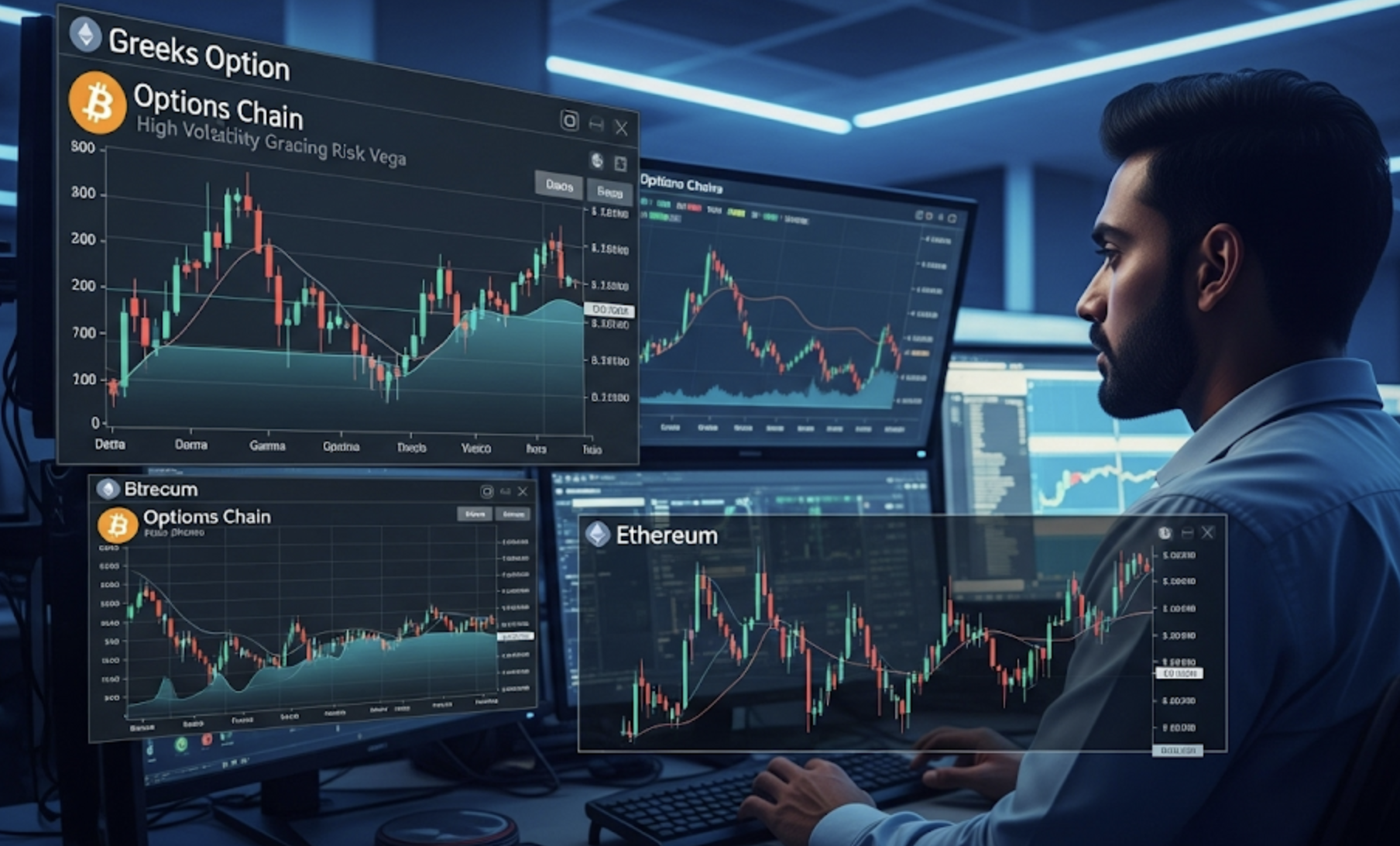Options Trading and the Greeks: Understanding Delta, Gamma, Theta, and Vega

Options trading is one of the more advanced areas in the investment world, requiring in-depth knowledge. It allows trading based on the future prices of various assets like stocks, commodities, or cryptocurrencies. To fully understand this complex system, it's essential to grasp some foundational concepts and at the top of that list are the Greeks.
The Greeks are critical tools that help investors analyze their positions, measure risk, and make informed decisions. In this article, we’ll explain the four most commonly used Greeks in the options market Delta, Gamma, Theta, and Vega with examples to make them easier to understand.
What Are Option Contracts? Let’s Start with the Basics
An options contract is a financial instrument that gives an investor the right (but not the obligation) to buy or sell a specific asset at a predetermined price (strike price) by a certain date.
There are two main types of option contracts:
- Call Option: Gives the holder the right to buy the underlying asset at the strike price within a certain time frame.
- Put Option: Gives the holder the right to sell the underlying asset at the strike price within a certain time frame.

Example:
If an investor expects the price of Ethereum to rise in the next month, they might purchase a call option to buy it at a fixed price. If the price actually rises, they can exercise the option and profit from the difference.
While options share some similarities with futures contracts, they offer more flexibility and risk management tools, making them a popular choice for portfolio diversification.
What Are the Greeks? Price Sensitivity Calculations in Options
Option prices aren’t determined solely by the price of the underlying asset. Factors such as time, volatility, and market expectations also play a role. That’s where the Greeks come in. The Greeks measure how sensitive an option's price is to various market conditions.
Understanding the Greeks is crucial for managing positions and optimizing risk in a portfolio.
Delta (Δ) – Sensitivity to Price Changes
Delta indicates how much an option's price is expected to change in response to a $1 move in the price of the underlying asset.
- For call options, delta ranges from 0 to 1.
- For put options, delta ranges from -1 to 0.
Example:
If a call option has a delta of 0.6, and the underlying asset increases by $1, the option’s premium is expected to rise by $0.60.
If a put option has a delta of -0.4, and the asset rises by $1, the premium is expected to decrease by $0.40.
Delta also serves as an estimate of the probability that an option will expire in the money. A call option with a delta of 0.8, for instance, has a high probability of ending up profitable at expiration.
Gamma (Γ) – Rate of Change in Delta
Gamma measures the rate of change in delta for each $1 change in the underlying asset’s price. In mathematical terms, it's the first derivative of delta.
The higher the gamma, the more volatile the delta, and thus the more sensitive the option is to price changes. Gamma is always positive for both calls and puts.
Example:
Let’s say a call option has a delta of 0.5 and a gamma of 0.1. If the underlying asset rises by $1, delta increases to 0.6, showing increased sensitivity to further price movements.
Gamma tends to be highest for at-the-money options and those with short expiration periods.
Theta (θ) – Sensitivity to Time Decay
Theta represents the daily loss in an option’s value as it approaches its expiration. This is often referred to as time decay.
- For long (purchased) options, theta is typically negative.
- For short (written) options, theta may be positive.
Example:
If an option has a theta of -0.05, the premium is expected to drop by $0.05 each day as it nears expiration, assuming all other factors remain constant.
Time decay accelerates as the expiration date approaches, especially for at-the-money options.
Vega (ν) – Sensitivity to Volatility
Vega measures how much an option’s price changes with a 1% change in implied volatility of the underlying asset. Since implied volatility reflects market expectations of future price movements, Vega becomes especially important during high-uncertainty periods.
Example:
If an option has a vega of 0.2 and implied volatility rises by 1%, the premium should increase by $0.20.
Vega is always positive, because as volatility increases, the chances of the option expiring in the money also increase, making it more valuable. However, option sellers tend to benefit when volatility drops, while buyers prefer rising volatility.
Can You Use the Greeks in Cryptocurrency Options?
Cryptocurrencies are increasingly used as underlying assets for options trading. The presence of high volatility in crypto markets makes the Greeks especially relevant.
Whether you're trading Bitcoin or Ethereum options, calculating and using the Greeks works exactly the same as in traditional markets. The key difference is that volatility (Vega) and sensitivity (Gamma) may show greater fluctuations due to the dynamic nature of crypto prices.
This makes risk management even more important when dealing with crypto options.

Why Are the Greeks Important? What Do They Offer Investors?
Options trading involves more than just guessing price direction. Understanding and applying the Greeks allows you to evaluate:
- Price movement sensitivity (Delta)
- Volatility in sensitivity itself (Gamma)
- Time-based price decay (Theta)
- Market uncertainty (Vega)
These indicators provide traders with a comprehensive view of risk, helping them construct strategies that are aligned with their market expectations.
Trading options without understanding the Greeks is like sailing without a compass. You might reach a destination, but not the one you intended.
Conclusion: The Greeks Are the Foundation of Options Strategy
Success in options trading doesn’t come solely from predicting price direction. Delta, Gamma, Theta, and Vega the four main Greeks are essential tools that help investors measure risk and optimize their strategies.
By mastering these calculations, you’ll be better equipped to:
- Manage risk,
- Forecast changes,
- Adapt to market volatility,
- And make informed investment decisions.
It’s worth noting that the four Greeks discussed here are not the only ones. More advanced traders can explore "minor Greeks" such as Rho or Lambda to deepen their strategy even further.
In the end, good traders don’t just predict they measure, analyze, and adapt



Comments ()